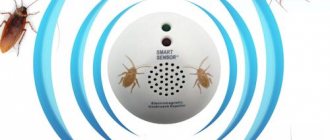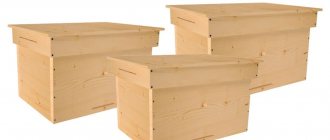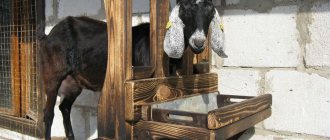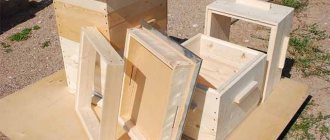What can I say - among all the creatures that live in our gardens, the mole has perhaps the most controversial image. A furry and cute-looking body with a blind but funny muzzle can delight many, but in reality this animal is one of the worst pests in the garden. Leaving him without attention and showing mercy is more expensive for yourself. Moles are famous for their excellent appetite and eagerly devour earthworms, which are doing their best to process our soil into useful humus. In addition, rhizomes of garden and vegetable crops fall on the mole's tooth, which, after meeting this creature, begin to wither and disappear in their prime. No, the mole does not feed on plants, but it spoils the roots that come across its path. Many people believe that garden beds beckon him with the presence of tasty things, but in fact, mole holes are found in abundance everywhere - not only in the beds, but also on unplowed virgin soil, abundantly overgrown with weeds. Another thing is that it is easier for him to dig his own passages in the beds - the earth has already been dug up, making it looser.
Mole: photo of the pest
Mole: underground dweller.
How to catch a mole in a jar?
There is another method that has been tested many times in practice to catch a mole: in a jar, pan, bucket or plastic bottle with the top cut off. This kind of mole trap can also be easily done with your own hands - for this you will need to make a kind of trap pit.
Let's look at the manufacturing procedure for this mole trap:
- You can take a large five-liter plastic drinking water bottle; you need to cut off the tapered top. Some gardeners successfully use three-liter glass jars - their width is quite sufficient for a mole to be caught in them (the animal is comparable in size to a rat). You can also use a suitable size pan or bucket; it is only important that the height of the trap is at least 25-30 cm, otherwise there is a chance that the mole will get out of it;
- Then the mole's passage is excavated and a hole is dug, identical in diameter and height to the trap;
- A prepared mole trap (container) is inserted into the hole;
- After this, the cracks along the edges of the trap are filled with earth, the earth here is compacted a little. As a result, the edges of the container should be hidden with a compacted earthen roller so that the mole does not feel them;
- The top of the trap is covered with a wooden shield or thick fabric so that light does not penetrate into the trap and does not scare away the animal.
Such a mole trap, installed in a gap in the underground passage of the mole, works even simpler than the one described above from two plastic bottles. The animal simply falls into the jar (or other deep container), moving along its course.
You also need to check the trap at least twice a day so as not to starve the caught animal.
Mole: features and infrastructure
Moles are sullen, solitary animals. They live underground and rarely come to the surface. They feed on various insects, larvae, worms and slugs. But they are notorious gluttons - they can easily covet a relative.
Moles build two different types of tunnels - deep and main. The first can be at a depth of about 2 meters, the second through passages, at a depth of up to 20 cm. It is the passages that are a problem for gardeners.
Traces of mole movement.
Moles damage roots with them, thereby disrupting plant nutrition. Rats and mice can settle in their passages, which cause even more harm.
It can be visually identified by the appearance of heaps of freshly dug earth on the site. You need to find the right passage, which is the main one. To do this, you need to select a passage that is always straight, trample it a little, and put a mark.
The mole will not build a new passage - he will definitely restore the old one, which is what he will get caught doing.
Installing a wire trap for a mole (video)
Now let's talk about those traps that have stood the test of time and are easy to get in stores. One such device is a wire mole trap. There is no point in describing her advantages and appearance - one picture will say a lot. Our task is to explain the basic principles of its installation on the site to achieve maximum effect.
Finding a mole's passages is always easy - molehills (hills of earth in the area where the animal comes to the surface) give away the enemy's work. There is always a direct connecting tunnel between neighboring molehills. To install the trap, you need to cut out a layer of earth. If your soil is not loose, this will be easier to do. Take the knife and plunge it into the ground, then move it until you feel that you have found a cavity in the ground. As soon as you find it, move the knife along the path until you cut out a layer up to half a meter long. You will need to place two mole traps in the designated place. It is desirable that the layer of earth have a cone-shaped shape - this way it will be more convenient to use. The entire operation is carried out with the utmost care.
When installing the mole trap, it needs to be cocked using the lower spring, which lifts it up until it is secured with a lock (this process can be seen in the video). As soon as the mole is in the affected area and the lock is pushed, the spring will work and the enemy will be caught. This trap usually turns out to be the last in the life of the mole, so be prepared for the fact that in the morning when checking the traps you will find an already lifeless body. Cruel, but at the same time effective. It is important that the lower part of the ring is slightly below ground level, for which, when installing, you need to slightly press the trap into the ground. Also, the bottom of the lock should not rest against the ground.
As soon as you install the mole trap, you need to cover it on top with a cut out layer of earth and camouflage this place, marking it for yourself for ease of inspection. Often a rope or wire is tied to a mole trap so that triggered traps can be pulled out of the ground. Gardeners often use a file or pliers to correct small defects in traps if necessary. If everything is done correctly, the traps will begin to bring considerable benefits to your farm. The main thing is to remember all the subtleties of their installation. Whether to expose an animal to mortal danger or give it a chance to survive is up to you to decide when choosing the type of trap. The main condition is to rid the area of the pest.
- Author: Svetlana
Rate this article:
- 5
- 4
- 3
- 2
- 1
(4 votes, average: 3.8 out of 5)
Share with your friends!
Types of mole traps
There are several types of traps and mole traps that have the general purpose of catching a mole. They differ in the way they are installed and operated. Let's take a closer look at popular models.
Ever seen a live mole?
Never happened
Wire
A wire trap is the simplest and most inexpensive device. It is made in the form of an elongated spring that has a loop, a guard, and a pressing foot.
The compressed spring is held by a guard, which prevents the animal from moving.
Wire mole trap.
When the pest tries to push it, the spring will open and the paw will be pressed against the loop. This is fraught with serious consequences for the mole, ranging from bleeding to complete and rapid death.
The price for these traps varies between 50 – 100 rubles. Efficiency increases when two traps are present at the same time. The death of the mole in this case is inevitable.
Trap installation:
- The stern passage is opened.
- Set the trap so that the walls of the passage close tightly with the loops.
- Cover the hole with thick cloth.
Spring mole trap: installation.
When installing two devices, the hinges should be directed in different directions to avoid contact. If there is a stopper, it should rest against the bottom. In its absence, it is appropriate to use a nail, which is inserted into a spring and rests against the walls.
You can make this device yourself. However, the store price is quite cheap. It will not be difficult for any consumer to purchase such a product.
The result usually exceeds all expectations. Often within two days you can catch the animal. If this does not happen, then move the trap to another hole. You will have to make a maximum of 3 rearrangements to catch the animal.
The advantages include low price and durability. Disadvantage: complicated installation. Although many gardeners note that this is the best option.
Masher
Mole crusher.
It is possible to use mousetraps or rat traps in the form of a crusher. They are inexpensive and sold in many stores. The crusher differs from the previous version:
- The trigger is triggered by tension (not push). They modify it themselves to take into account the specifics of the pest’s movement;
- The pressing bracket should not catch on the fabric or arch when repositioning.
When the first problem occurs, the loop securing the guard is filed down. The guard will work when the mole removes the noose. Earthworms are planted on it as bait.
To avoid getting caught in the arch, the placement area is covered with a pan or bucket. There is enough space above the trap to trigger it. It is also better to install 2 devices.
Tunnel trap
Tunnel trap for mole.
There are some disadvantages compared to the previous two. This is a high price. The cost reaches 400 rubles. But the trap can replace 2 wire models. It is also worth paying attention to the complex installation of the device.
The advantage is that it is not covered. By the raised spring, you can understand that the animal has fallen into a trap.
Harpoon trap
Harpoon trap.
Passing under the trap, the pest pushes the guard, which interferes with it. As a result, a powerful spring drives the spokes, which pierce the mole. Advantages: easy installation and visibility of the device operation.
The cost is quite high. On average - 1000 rubles. Making such a device yourself is difficult. This method is also completely inhumane. Many people won't want to use it for this reason.
Trap - scissors
When triggered, the device squeezes the sides of the animal. Death occurs very quickly from injuries and hemorrhage. The price is at the level of the harpoon variety. Among the domestic mole traps stands Fr.
Installation method:
- The scissors are pulled apart.
Trap scissors.
- Insert the spacer.
- Install the claws.
- Cover with a bucket.
- When it hits the strut, the animal climbs up. The spacer lowers and the claws kill the pest.
Such devices are sold in online stores and hardware departments.
Expensive models and scares
Solar powered repeller.
Original models with a complex design are called expensive and high-quality:
- SuperCatVoleTrap – price about 1500 rubles. The kit is equipped with a special device that gets into the hole very easily;
- Skat 63 – it is based on 2 pairs of scissors. Price – 1500 rubles;
- Talpirid Mole Trap is a complex trap, but easy to install. The mechanism resembles scissors.
Various ultrasonic repellers are installed around the perimeter of the site and launched. They must be tuned to the desired frequency and work throughout the entire garden or meadow. They have a negative effect on rats and mice. But you should be careful, because pets and livestock are sensitive to ultrasound.
Repellers have a good effect. However, traps are more reliable.
Calling the special services is the most expensive option. The price starts from 2000 rubles. The service workers handle the entire process themselves. Effective, fast, and most importantly, does not require any effort. But it's expensive.
Lures
Unfortunately, bait will not help in the fight against moles. They are indifferent to granules with poison. They are almost impossible to poison.
The only option is to cut the earthworm into pieces in order to fill it with poison. The movement of dying worms can attract pests. By eating them, the moles will die.
Moles are difficult to poison.
Lethal means
In the fight for territory, you can also resort to the use of pesticides. However, in this case, it will not be possible to exterminate the animals by poisoning the bait due to the fact that moles feed on insects and bugs.
The best option is to use substances and preparations that are distributed in the air space of the soil and act through evaporation.
- Calcium carbide. The use of a solid substance is due to the calcium phosphide and acetylene contained in the composition, the vapors of which are toxic to living beings (including the owner of the site). To achieve the result, you need to place several weighty pieces of carbide in a plastic bottle and pour in water, and place the container itself with the neck inside the underground passage. As a result of a chemical reaction, accompanied by active seething, gas will be released, which will cause significant damage to the health of the animal.
- "Alphos the mole." The principle of operation is approximately the same as in the case of carbide. The product is a tablet with aluminum phosphide. This poison has a destructive effect on both animals and insects. “Alphos mole” is buried in the ground, and when exposed to humidity, toxic gas is released.
- "Detia". A drug intended not to exterminate living creatures, but to repel them. During the use of granules, it is not a poisonous gas that is released, but evaporation of essential oils, the smell of which is unpleasant to moles.
- "STOP-Mole." A specialized product for exterminating earth-moving animals. Presented in the form of tablets that need to be buried in the mink area. It is best to carry out manipulations in the middle of daylight hours when the pest is hibernating.
- Green house ANTICROT. The chemical has a completely different principle of action. Acts as a bait, which contains food elements that enhance the perception of the drug as a source of nutrition. The damaging substance is bromadiolone, which contributes to the deterioration of the blood clotting of an animal or insect. As a result, after a few days the mole rat dies.
Actions after eliminating the animal
Scare and destruction are not a guaranteed solution to the problem. After a while, other representatives may enter the garden. Then all the manipulations are repeated again.
To prevent intrusion:
- fence the perimeter of the site using a special mesh or slate. They are buried in a trench (depth 70 - 80 cm). The height above the surface is 20 cm. A solid strip foundation is also suitable (more expensive method);
- If the lawn is damaged, lay the mesh in a horizontal position, lowering it to a depth of 5–10 cm under the required area.
Such work and materials cost a lot. Not everyone will do this.
How to protect the area from repeated penetration of moles
Catching moles is usually not an easy task. Therefore, even if you win the first stage of the war with earth-moving animals, you need to take care of the subsequent protection of the site from repeated invasion.
This is interesting: moles rarely live alone. In most cases, a whole family is located on the site, which can reach several dozen in number.
To prevent the appearance of individuals, you should adhere to a number of recommendations:
- Stretch a metal or plastic mesh along the entire perimeter of the site so that it protrudes above the ground by 20 cm and is submerged by 70. You can also use slate, PVC or polycarbonate as a barrier structure using the same principle.
- A shallow ditch dug out and filled with crushed stone along the fence line helps protect the territory quite well.
- A more expensive option is to build a concrete foundation and then install a fence on it.
- A lawn net, which is laid 10 cm deep under the turf, will help protect the area.
Whatever method you choose to defend your territory, do not forget about humanity. Despite the considerable damage these animals cause to the garden, they also have the right to exist.
DIY making
If it is impossible or unwilling to kill pests, alternative options are used, homemade traps, which allow you to catch a living mole. The basis is a plastic pipe with a diameter of 7.5 cm and a length of 20 cm. Algorithm:
- A door is installed at one end that opens only inward. Tin door (thickness 1 mm).
- Ears with holes are made in the upper part of the door. Cut the top of the workpiece, retreating 1 cm and bending the cut edge.
- A wire grill is attached to the other end.
- Several holes with a diameter of 10 mm are drilled in the upper part to observe the prey.
The principle of operation is simple - the animal gets inside, but cannot get out. All that remains is to take it out with the trap and shake it out.
Ready-made mole trap, made by yourself.
The question is blunt: to eliminate or not to eliminate
Now let's move on from the lyrics to action. No matter how pleasant the mole may be and no matter how much pity we feel for it, we need to get rid of it. Get rid of it - the garden and your crops will breathe a sigh of relief. If you don’t get rid of it, it will rid your area of worms, and then difficult times will come. It is not at all necessary to kill the animal; it is enough to simply catch it in one of the traps and take it as far as possible from your area. Catch it - and you can show the little animal to your children, who are always interested in such finds. In general, the capture process can also be made enjoyable, especially by diluting it with the realization that now you are providing great help to your site.
There is no doubt that the best way to get rid of moles are mole traps. Unlike chemicals, they do not scare away the animal, but physically eliminate it or simply capture it. It all depends on the type of trap installed. Often traps can be purchased at gardening stores, but you can build something with your own hands. We bring to your attention one of these homemade products. It is not difficult to do it yourself, and the efficiency with proper installation will pleasantly please you.
What to do with a caught animal?
A mole caught in a mole trap must be taken out of the area, carried away to a distance of about 1 km and released.
When freeing a captive, you need to be careful: moles have very sharp, albeit small, teeth, with which they can bite quite painfully (after all, moles are, first of all, predators). The epidemiological danger of moles has been poorly studied, and it is never possible to guarantee for sure that when an animal bites it it will not give a person some kind of bacterial “joy”.
The smartest thing to do is to take the mole out of the area directly in the mole trap, and at the place of release, simply open it and carefully shake the animal onto the ground. It is better to release the mole among thick grass or in the forest, where it has a better chance of remaining unnoticed by predators.
The release operation itself should be carried out immediately after discovery of the capture. As noted above, an extra few hours of hunger can be fatal for a mole.











